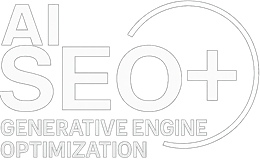Cursor
mode
SEO PLUS GEO
Mastering Ad Copywriting: Tips for Clear, Engaging, and Effective Ads

Ad copywriting is crucial for crafting ads that grab attention, engage users, and drive conversions. Well-written ad copy can make a significant impact on the performance of your Google Ads campaigns. Below is a detailed breakdown of the ad copywriting process based on the given topics, with eight points for each.
Write Clear, Compelling Ad Text
Ad copy must be clear, concise, and persuasive to capture users’ attention and prompt them to take action. Focus on delivering your message in a straightforward way while maintaining appeal.
- Keep the language simple and easy to understand.
- Focus on delivering a direct message with strong relevance to the user’s query.
- Avoid jargon or overly complex phrases.
- Use short sentences that communicate your value proposition.
- Make your key point early in the ad to grab attention.
- Focus on benefits rather than features to connect with users.
- Highlight what makes your product or service the solution to their needs.
- Include emotional triggers to engage the user’s interest.
Include a Strong Call-to-Action
A strong call-to-action (CTA) is essential for guiding users toward the desired action, whether it’s making a purchase, signing up, or learning more. Your CTA should be clear, urgent, and actionable.
- Use action verbs like "Buy Now," "Get Started," or "Learn More."
- Create a sense of urgency with phrases like "Limited Time Offer" or "Act Now."
- Keep the CTA short, simple, and direct.
- Align the CTA with the user's intent (e.g., "Request a Free Quote" for lead generation).
- Position the CTA prominently within the ad text.
- Avoid vague CTAs—be specific about the action you want the user to take.
- Experiment with different CTAs to identify the most effective one.
- Ensure that the CTA complements the ad’s overall message.
Highlight Unique Selling Points (USPs)
Your ad copy should emphasize what makes your business, product, or service stand out from the competition. Highlighting unique selling points (USPs) helps you differentiate and convince users to choose you over others.
- Focus on your product’s or service’s most attractive features.
- Mention exclusive offers or benefits (e.g., free shipping, 24/7 support).
- Highlight what sets you apart from competitors (e.g., price, quality, innovation).
- Clearly communicate the value users will get from choosing your business.
- Address pain points by offering specific solutions.
- Use your USPs in headlines and descriptions for better visibility.
- Keep your USPs concise and impactful—don't overwhelm users.
- Use social proof (e.g., "Trusted by 1,000+ businesses") to build credibility.
Use Relevant Keywords in Headlines
Using relevant keywords in your ad copy, especially in the headline, helps improve ad relevance and Quality Score. Including keywords that match the user’s search query ensures that your ad is highly targeted.
- Include primary keywords in the headline for better visibility.
- Use dynamic keyword insertion (DKI) to automatically match search queries.
- Focus on keywords that reflect the user's intent and your offerings.
- Ensure the headline directly addresses the user’s search question.
- Incorporate long-tail keywords to improve targeting and ad performance.
- Use keywords that match user expectations for higher engagement.
- Avoid keyword stuffing—maintain a natural flow in your ad text.
- Align keywords with your landing page content for consistency.
Test Different Ad Copy Versions
Testing multiple versions of ad copy is essential for identifying the most effective messaging. A/B testing different headlines, descriptions, and CTAs allows you to optimize your ads over time and improve campaign performance.
- Create variations of the headline, description, and CTA.
- Test different value propositions to see which resonates with users.
- Experiment with different emotional appeals (e.g., urgency vs. savings).
- Track performance metrics such as CTR and conversion rate.
- Test one element at a time to isolate the impact of each change.
- Run tests on multiple devices to see how copy performs on mobile vs. desktop.
- Refine your ads based on test results for continuous improvement.
- Optimize your ad copy over time based on real-world data.
Optimize for Engagement
Engaging ad copy is essential for attracting attention and encouraging users to click on your ad. By optimizing your ads for engagement, you can improve CTR and overall campaign performance.
- Use compelling and attention-grabbing headlines.
- Address the user’s pain points and offer clear solutions.
- Keep the tone conversational and aligned with the brand voice.
- Use numbers, statistics, or strong adjectives to create interest.
- Offer incentives like discounts or free trials to increase clicks.
- Personalize the ad copy to make it more relevant to the target audience.
- Use ad extensions to provide more information and increase visibility.
- Focus on delivering a memorable and impactful user experience.
Conclusion
Effective ad copywriting is vital to the success of a Google Ads campaign. By writing clear, compelling ad text, using strong CTAs, highlighting USPs, and testing different versions of your ads, you can maximize user engagement and conversions. Optimizing for relevance with keywords and continually refining ad copy based on performance ensures long-term campaign success and better ROI.



